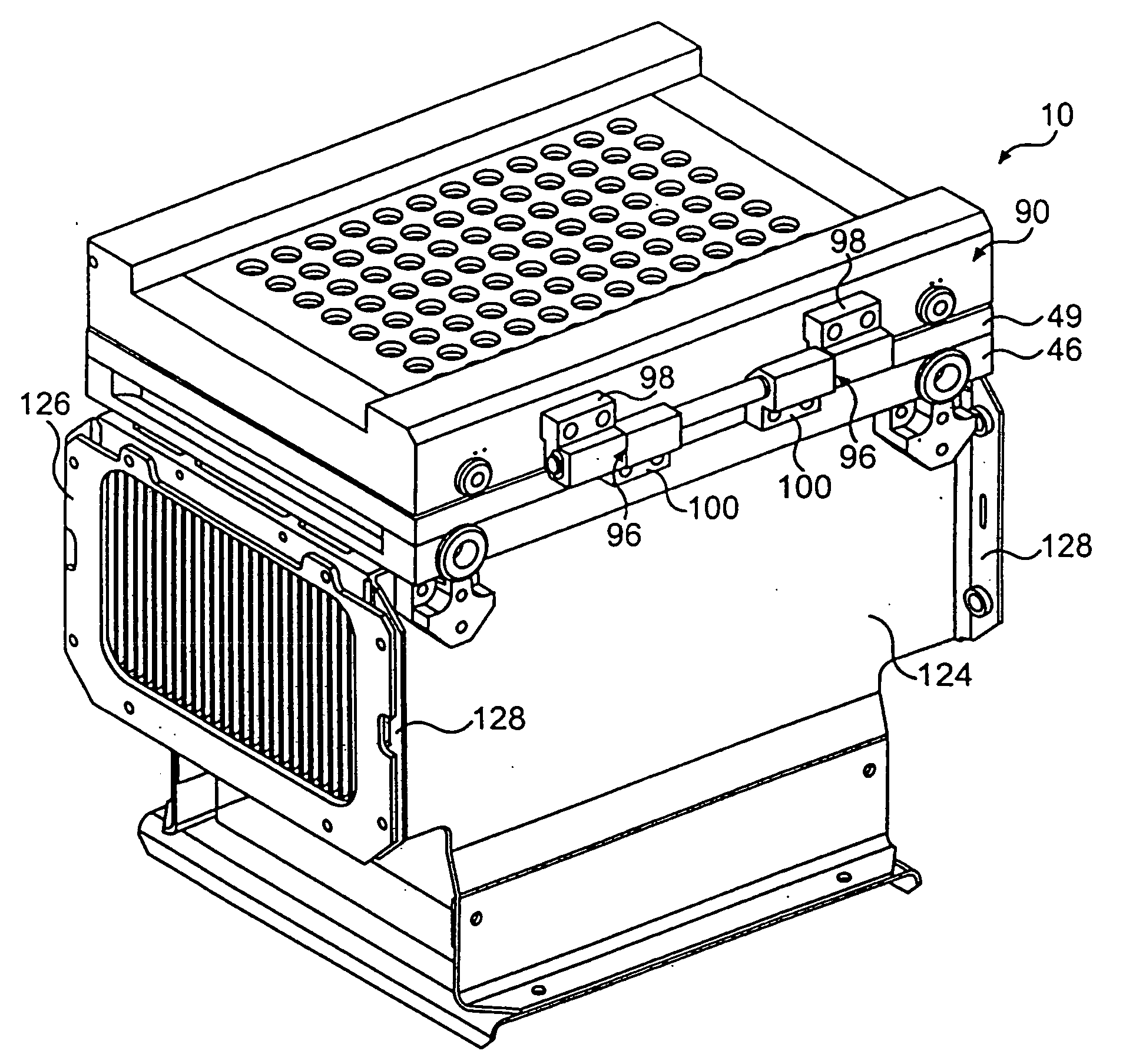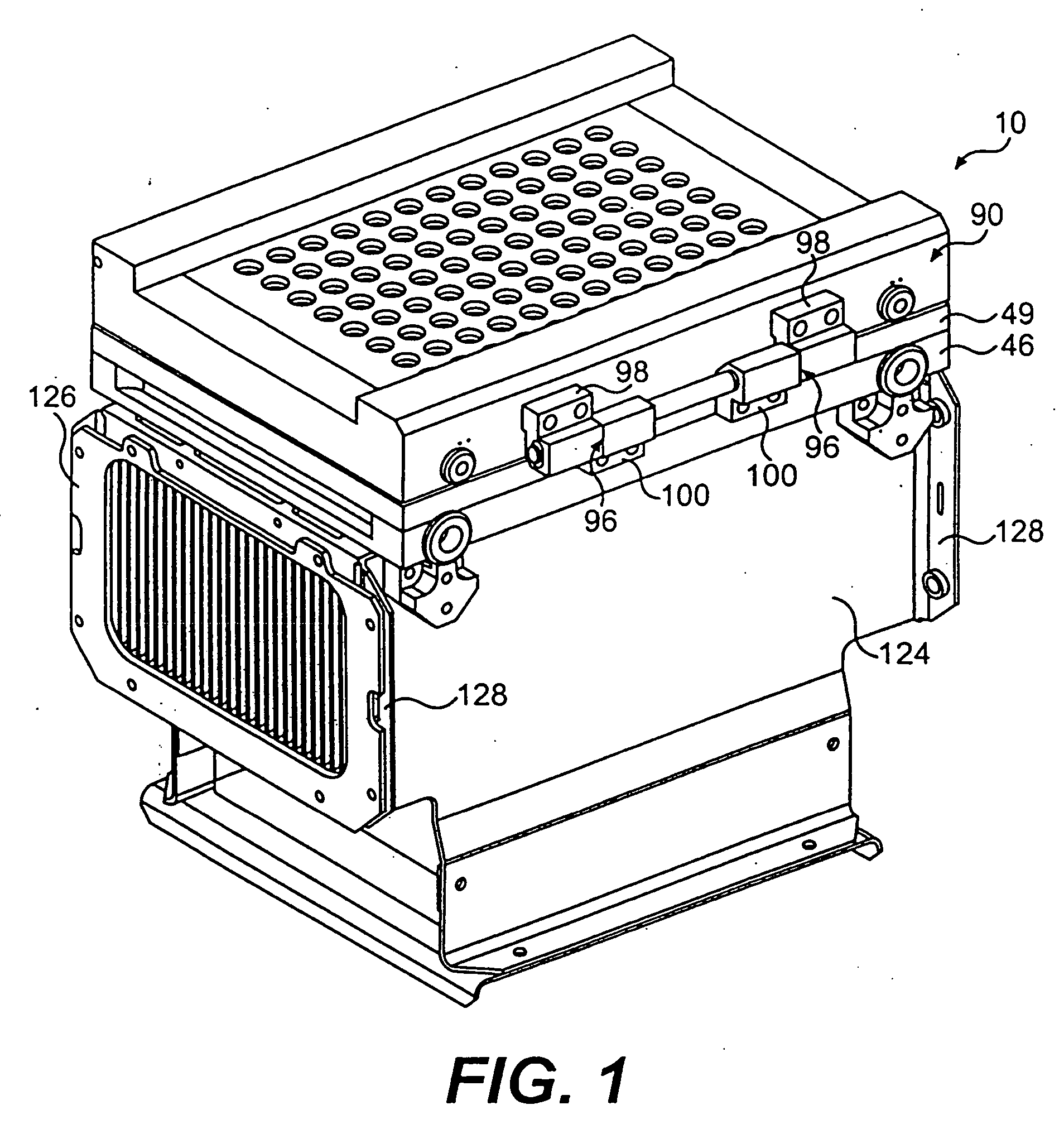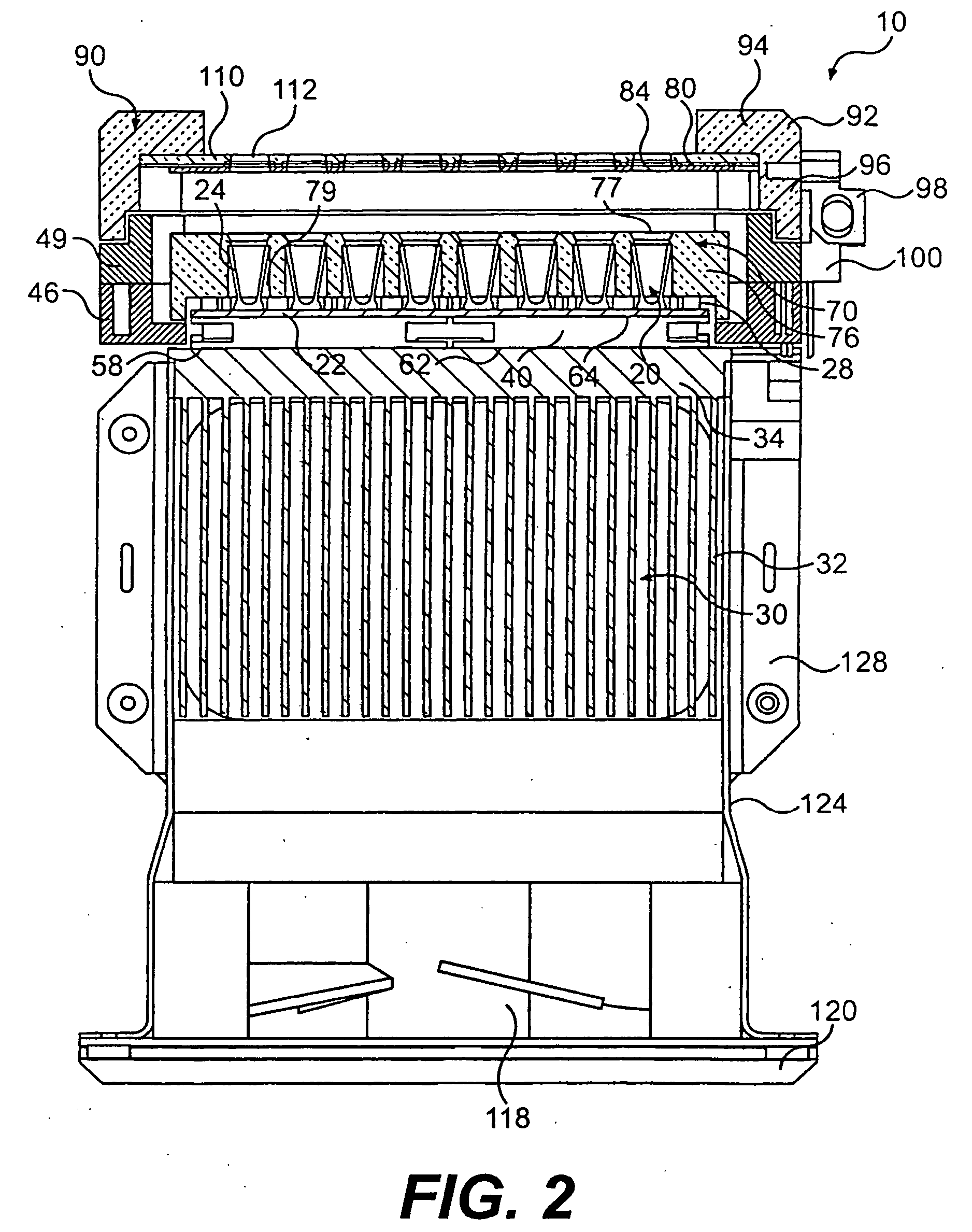Method for thermally cycling samples of biological material with substantial temperature uniformity
a biological material and temperature uniformity technology, applied in the field of apparatus for heating samples of biological materials, can solve the problems of failure or undesirable outcome of experiments, undesirable degree of disparity, reaction to improperly occurring, etc., and achieve the effect of substantial temperature uniformity
- Summary
- Abstract
- Description
- Claims
- Application Information
AI Technical Summary
Benefits of technology
Problems solved by technology
Method used
Image
Examples
Embodiment Construction
[0045] Reference will now be made in detail to the present preferred embodiments of the invention, examples of which are illustrated in the accompanying drawings. Wherever possible, the same reference numbers will be used throughout the drawings to refer to the same or like parts.
[0046] In accordance with the present invention, an apparatus for thermally cycling samples of a biological material in the form of a biological reaction mixture such as DNA is provided. In accordance with the present invention, the apparatus includes a thermal block assembly including a plurality of sample wells for receiving sample tubes of a biological reaction mixture. As embodied herein and shown in FIGS. 1-8, the apparatus 10 for thermally cycling samples of DNA includes a thermal block assembly 20. Thermal block assembly 20 includes a flat thermal block plate 22 and a plurality of sample wells 24 for receiving tubes with samples of DNA, as best shown in FIGS. 2, 6 and 7. Thermal block plate 22 is su...
PUM
| Property | Measurement | Unit |
|---|---|---|
| volume capacity | aaaaa | aaaaa |
| volume | aaaaa | aaaaa |
| temperature | aaaaa | aaaaa |
Abstract
Description
Claims
Application Information
 Login to View More
Login to View More - R&D
- Intellectual Property
- Life Sciences
- Materials
- Tech Scout
- Unparalleled Data Quality
- Higher Quality Content
- 60% Fewer Hallucinations
Browse by: Latest US Patents, China's latest patents, Technical Efficacy Thesaurus, Application Domain, Technology Topic, Popular Technical Reports.
© 2025 PatSnap. All rights reserved.Legal|Privacy policy|Modern Slavery Act Transparency Statement|Sitemap|About US| Contact US: help@patsnap.com



